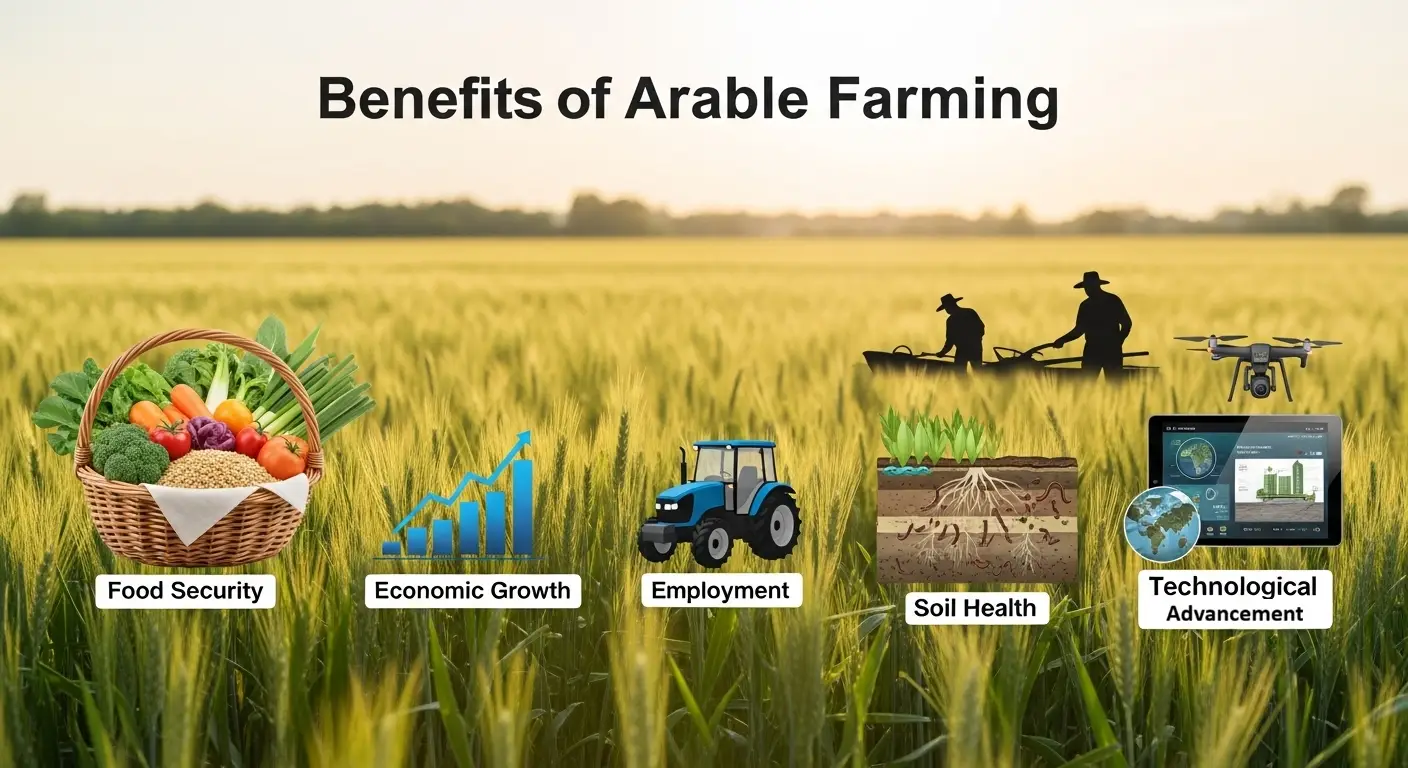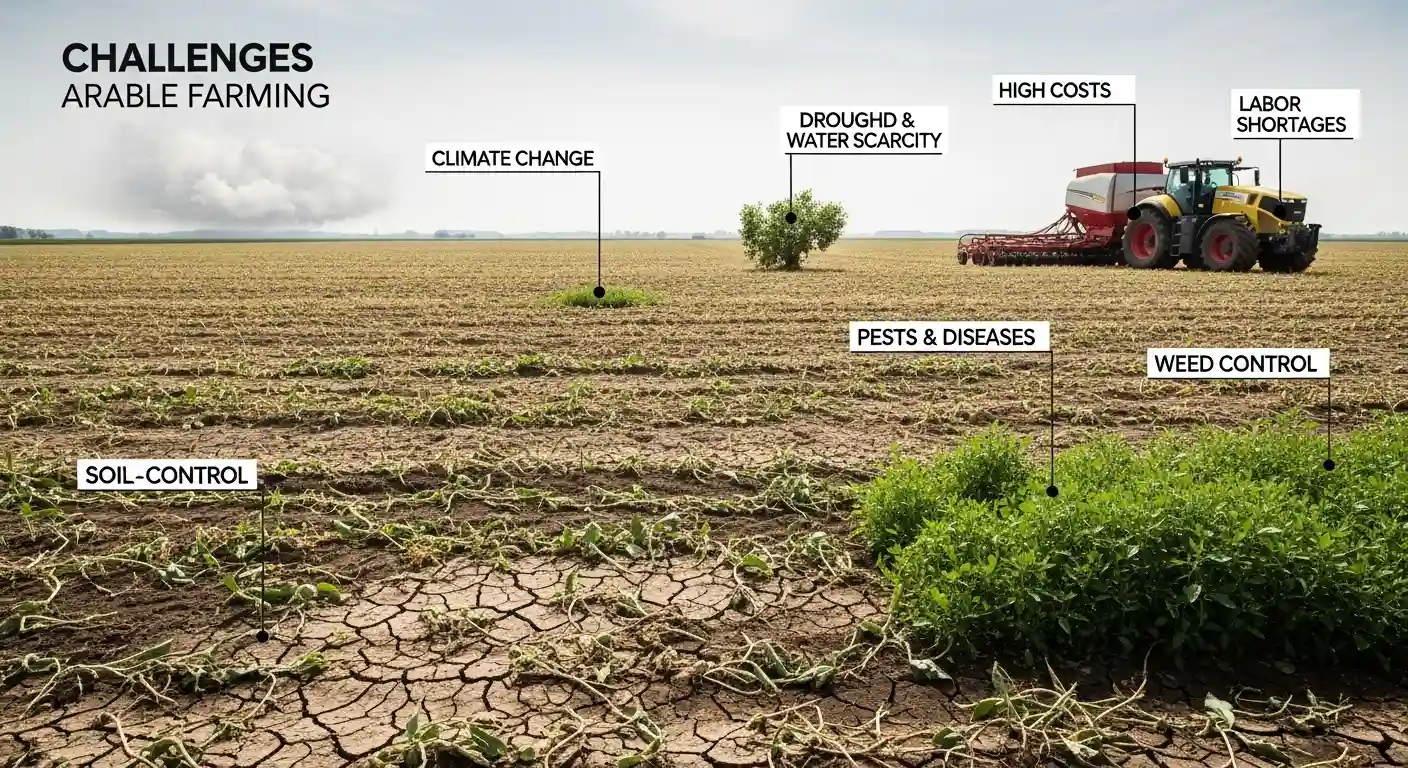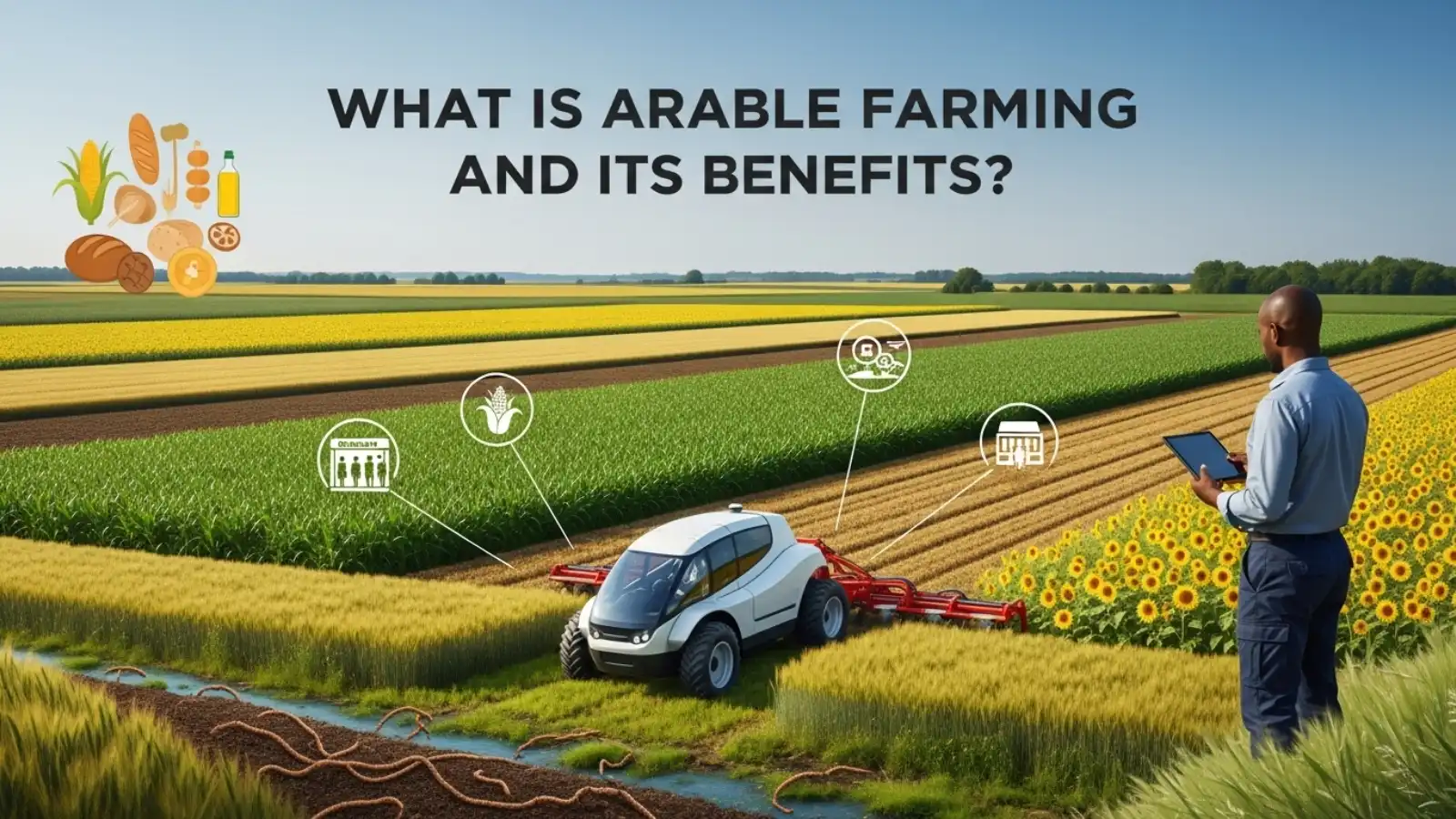Arable Farming Meaning
We live in an era where the only thing we can rely on to live through- is ourselves. Same theory goes in for our farmers, the land laborers, but despite their hard work and determination, the fruit to their sweat is what the land itself decides to give, that there is when Arable farming takes place in.
What is Arable Farming?
To depend on your land entirely for cultivating, ploughing, and farming crops and plants instead of cattle farming and raising animals is called arable farming.
Growing crops like rice, vegetables , fruits, etc., that provide a source of raw materials, food, and eventually selling them, becoming the fundamental source of income, is the main thought process behind this concept.
Key benefits of Arable farming

To sustain the economy and maintain the harmony and balance of the ecosystem, it is essential for there to be enough arable farmers who practice the concept and gain and spread the benefits through and through.
- Backbone of food production: In a country where hunger is one of the primary issues impacting the growth and development of the nation, growing crops like rice, maize, pulses, vegetables, and fruits could help curb the problem to a great extent by forming the diet of billions. It also reduces the dependency on food imports and promotes the concept of “Make in India” for good.
- Economic growth: Large-scale food production can help grow the nation economically and financially. A surplus harvest can be exported, gaining foreign trust and exchange ; domestically speaking, it could sustain farmers ‘ livelihoods . Therefore, it also increases employment opportunities for a wide range of locals-from field laborers to machine operators -thus securing a major source of income and social stability. Furthermore, industries benefit greatly from arable farming, such as cotton for textiles, sugar from sugarcane, and maize for starch, hence increasing productivity and interdependence on agriculture and manufacturing.
- Soil fertility: Arable farming is only possible in well-drained, fertile soil that is suitable for tilling. Crop rotation and green manuring help maintain soil fertility , and the use of non-chemical fertilizers is an added bonus to the mix. The flexibility to grow in different climates and adapt to environmental changes helps rural communities survive without issue and sustain the true nature of the land.
- Contribution to renewable energy: With growing carbon emissions and environmental damage, sustainable steps toward a greener future in every aspect of the industry have become the most crucial focus -arable farming also helps address this issue by providing crops like sugarcane, maize, and oilseeds for producing biofuels like biodiesel and ethanol, thereby reducing the dependency on fossil fuels and contributing to green, clean energy.
What are the challenges of Arable farming?

As easy as it sounds, there are major factors hampering the concept and causing issues for the farmers to sustain a decent livelihood and state of the nation.
- Water scarcity: Even though arable farming is great in terms of large-scale food production, its dependency on water for irrigation has caused issues like waterlogging and soil salinity due to over-irrigation.
- Soil degradation: If not maintained well, very fruitful land can become barren due to the loss of soil nutrients and structure. Topsoil erosion by wind and water scarcity can also lead to a loss of soil fertility. Additionally, repeatedly growing the same crop exhausts the soil , causing it to harden and hence increasing dependency on chemical fertilizers for production.
- Pests, diseases , and weeds: Infestation of pests and weeds can completely erode a large portion of crops if not handled in time. However, the increasing use of chemical pesticides can harm the environment and land in multiple ways for future production.
- Expenses: Buying fertilizers and pesticides that do not harm the environment, input machinery , and maintaining the structure of the land is a hefty cost for local farmers , and a lack of it could disrupt productivity. Economic crashes, market fluctuations , and inflation also impact the farmers miserably.
Solution to these challenges
There’s always hope at the end of the road.
- Soil health management: Adopt crop rotation, use organic compost, green manure, and bio-fertilizers instead of chemical inputs, and prevent minimum to zero tillage to avoid soil erosion.
- Water management: Practice rainwater harvesting and implement drip irrigation to conserve water ; promote mulching to preserve soil moisture and overall soil health.
- Pest and weed infestation : Encourage crop diversification to minimize pest spread and limit the use of chemical pesticides; combine bio composts and other cultural treatments to save money and maintain crop health.
- Finance management: Use organic methods instead of chemical practices to reduce hefty expenses. Seek help from government-affiliated schemes launched to support farmers and agricultural lands.

